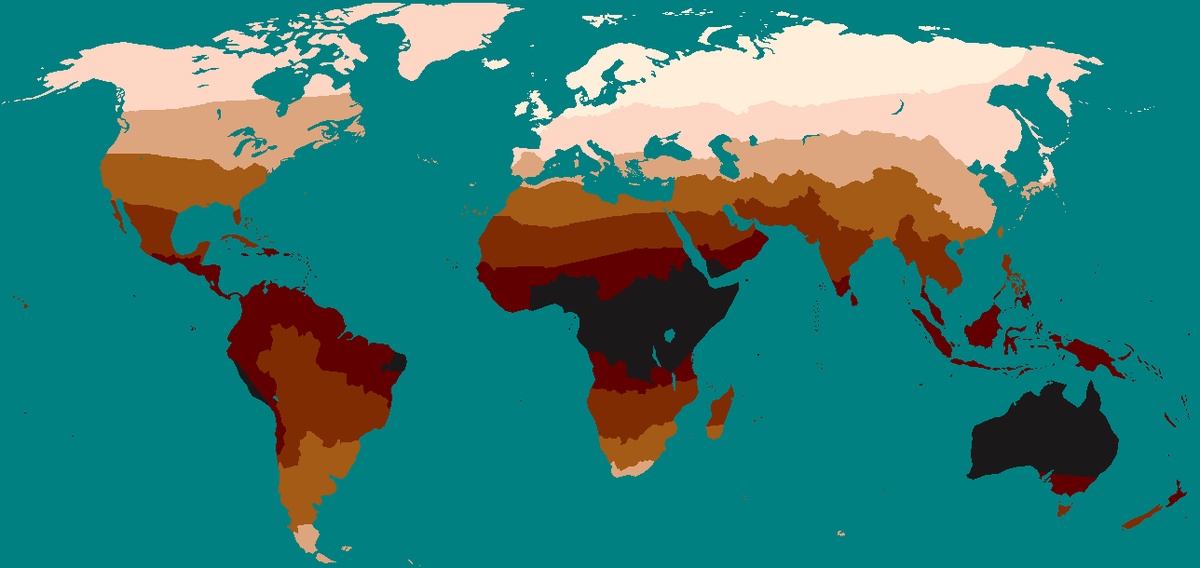Natural selection helps in Europe the mutations that illuminate the skin

The color of the skin varies depending on the latitude and, therefore, the intensity of the ultraviolet light: people living in low latitudes have a darker skin and those living in high latitudes have a clearer pigmentation. The researcher of the UPV-EHU Saioa López has analyzed the reason for this depigmentation. During the study, it has concluded that the evolution is in favor of producing mutations that illuminate the skin (probably due to the need to synthesize vitamin D in latitudes with low solar radiations compared to Africa), although in turn increase the probability of suffering melanoma or skin cancer. Specifically, he has identified two mutations that cause skin whitening. In addition, it has identified new genes and genetic variants that may be related to the differences in pigmentation that appear in our population.
It is possible that the first hominids that appeared in Africa have a clear skin covered with hair, like other primates. It is believed that when they became biped they lost their hair and then natural selection bet on a darker skin to protect themselves from ultraviolet light. However, when our ancestors left Africa (about 100,000 years ago) and headed to Asia or Europe, where the intensity of ultraviolet rays is lower, they once again have a less pigmented surface.
It is not clear what has caused the depigmentation of these populations, and in this sense two hypotheses have been proposed: on the one hand, the relaxation of the natural selection that keeps the skin dark in Africa, since the levels of ultraviolet light outside of Africa are lower; on the other hand, the natural selection can help to clarify the skin, since the presence of a skin of dark pigmentation in the high latitudes prevents vitamin survival.
Saioa López, researcher at the Department of Genetics, Physical Anthropology and Animal Physiology of the Faculty of Science and Technology of the UPV/EHU, has investigated this topic. His research has focused on identifying the selection pressures that have guided the evolution of this characteristic and on the identification of new genes and genetic variants that cause differences in pigmentation among people. In particular, he wanted to demonstrate that depigmentation has been an adaptation process supported by natural selection. In the research, from the methodological point of view, he has used various techniques, both molecular and cellular biology and bioinformatics.
In this way, two mutations have been identified that provoke the functional whitening of the skin in the European population. Significant evidence has been found that natural selection is contributing positively to these mutations and is being maintained in the European population to achieve a lighter skin color. In addition, melanoma samples have been analyzed and these same mutations have been observed to increase the risk of developing melanoma, the most violent and lethal skin cancer.
Vitamin D vs melanoma
"If the natural selection is helping those mutations that illuminate the skin," explains López, "it will be because they provide some advantage, and it is possible that this advantage is to obtain a greater synthesis of vitamin D." Vitamin D can be obtained through the diet, but also indirectly through a superficial process in which ultraviolet light intervenes. A dark skin pigment (melanin) acts as a barrier avoiding the entrance of ultraviolet rays. In high latitudes, as the intensity of ultraviolet light is very low, this can become a problem, as a suitable level of vitamin D is not synthesized.
Vitamin D is critical for skeletal development and mineralization, and lack of vitamin D can cause health problems in children. Melanoma, for its part, is a cancer that usually appears in adulthood after the reproductive stage. From the evolutionary point of view, these potentially carcinogenic adult individuals, who have already had offspring, have ceased to be important for evolution.
NOTE: News created with material provided by the communication service of the UPV/EHU.






